No matter whether your Christmas is devoutly religious, or seriously secular, if you look at paintings from the Western canon it is hard not to come across scenes of the Nativity. From the central figures of the Virgin Mary as mother, and her newborn child Jesus Christ, they can epitomise one of the three key events on which Christian faith is based, speak deeply about the relationship between a mother and her infant, provide insight into family life in extreme poverty, or many other things.
A good painting of the Nativity should have readings which extend beyond basic narrative of the accounts in the Gospels, and I have tried to select works with that wider relevance. I have excluded those showing an older infant Christ with the Virgin Mary, usually titled Madonna and Child or Virgin and Child, and those depicting events following the Nativity, such as the flight to Egypt and the circumcision.
Images of the Nativity are among the earliest as well as the most prominent themes in post-classical Western art, and their history is explained in this Wikipedia article. Some early works set the Nativity in a cave, which matches the designated site of pilgrimage in Bethlehem, but by the thirteenth century most works had come to conform with the Gospel account of Nativity in a stable.

Margarito d’Arezzo’s The Virgin and Child Enthroned, with Scenes of the Nativity and the Lives of the Saints from about 1263-4 starts its multi-panel narrative at the top left, with the Nativity, in which the three figures of the Holy Family are shown, with the infant Christ asleep in a separate crib. Despite the title’s promise of more than one scene, it appears to move swiftly to Christ’s baptism in the next panel.

Giotto painted one of the earliest ‘modern’ depictions of the Nativity in his Adoration of the Magi in about 1305. He has included many of the narrative elements, such as the star which guided the Magi to Bethlehem, the gifts brought by them, and their camels, all of which have become favourites in subsequent paintings, even modern Christmas cards.

In the northern Renaissance, it became popular to depict the stable as a dilapidated thatched structure of the type seen widely across the countryside of northern Europe. Robert Campin’s is adorned with inscriptions to link it to the Biblical text, and includes local musicians playing their respects.
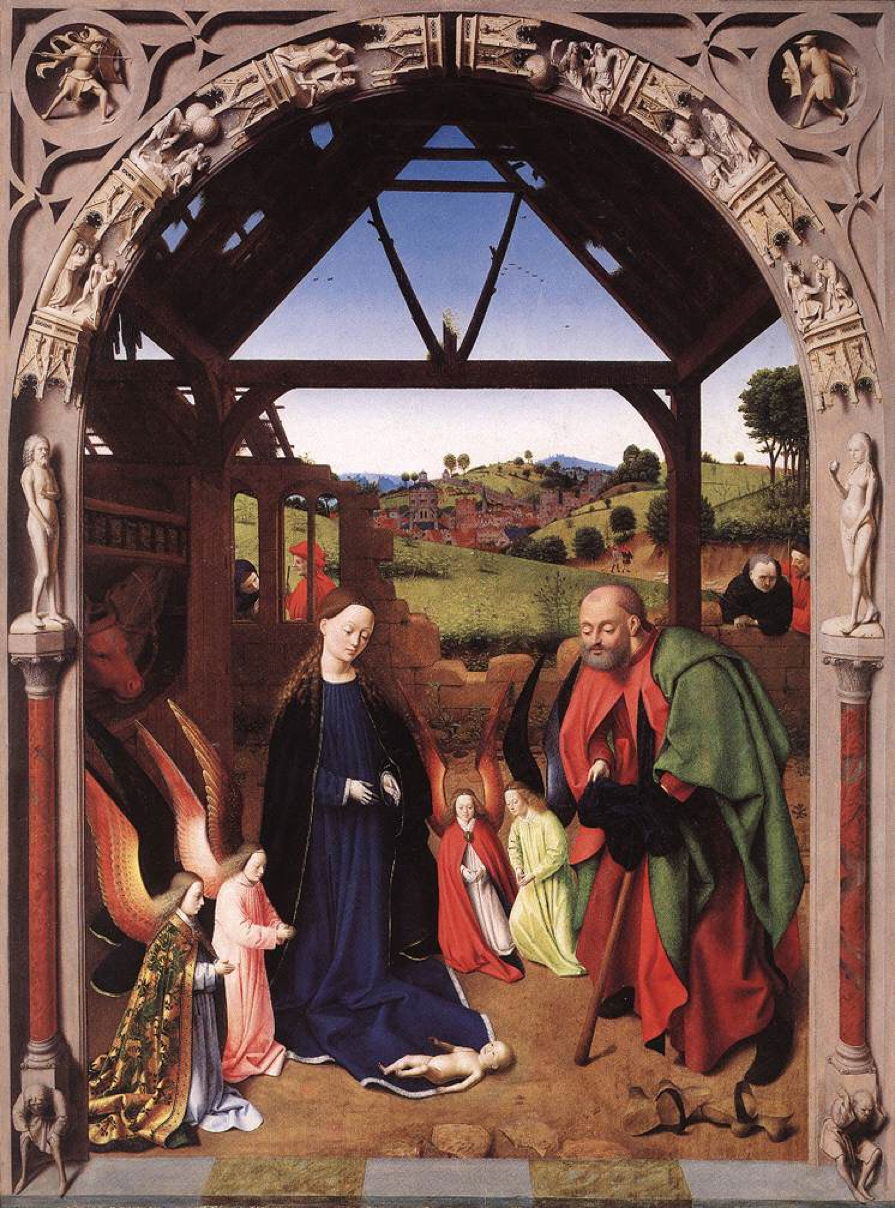
In the middle of the fifteenth century, Petrus Christus elaborated his careful perspective projection into a gentle trompe l’oeil, in which its facade acts as a three-dimensional frame. The contrast in size between the tiny angels and the parents of Christ is striking. As in Robert Campin’s painting above, Joseph is shown as being quite old, bearded and bald, and possibly slightly infirm with his walking stick.
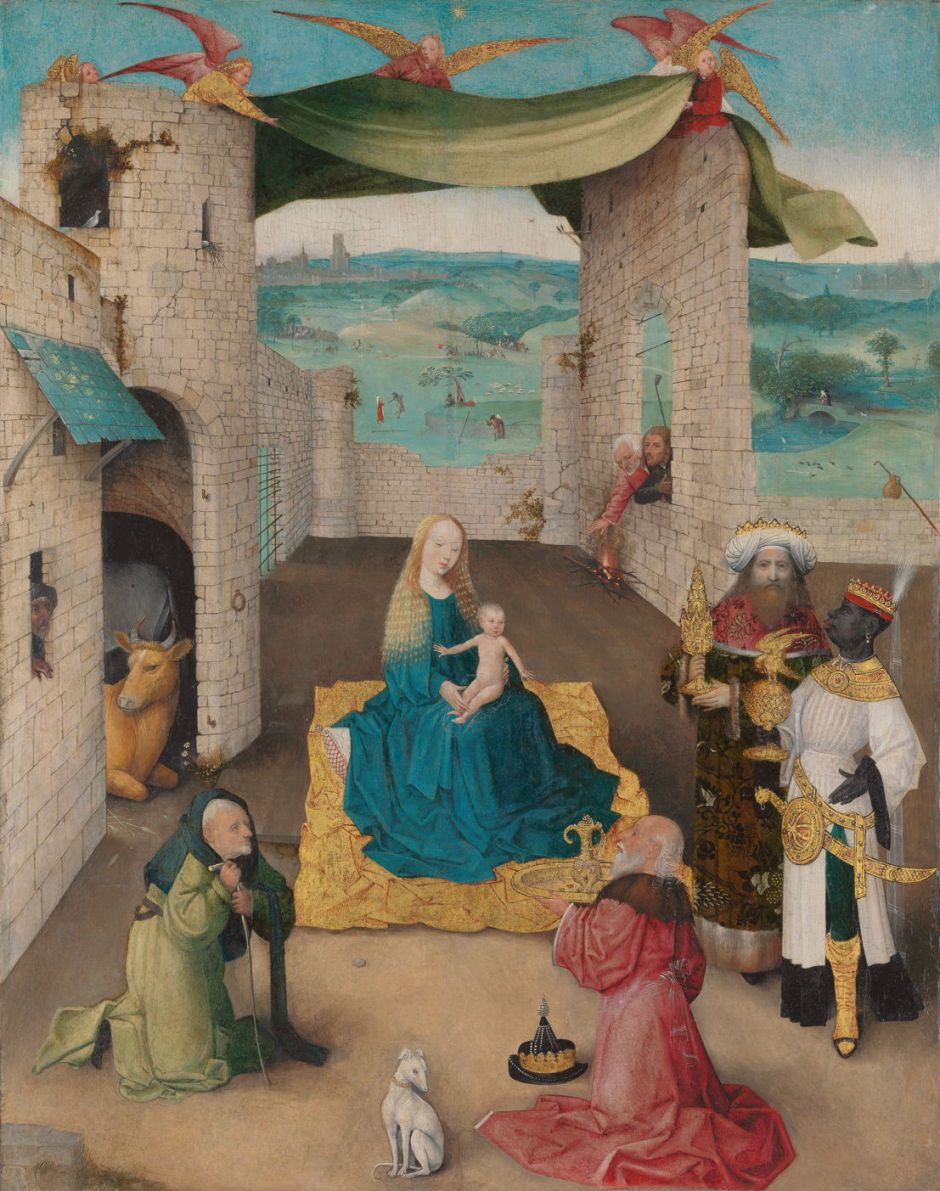
The earlier of Hieronymus Bosch’s two surviving Adorations of the Magi is magnificently painted in accordance with established conventions. But beyond the Holy Family and the Magi, it moves further from convention. The two shepherds leaning in through an empty window look faintly suspicious, and events in the countryside beyond include armies on the march, and a body hanging from a gibbet.

Bosch’s later triptych includes an anti-Christ within the tumbledown stable, and signs of imminent warfare in the rolling pastures beyond.

Prior to 1500, Botticelli’s nativities had also appeared quite conventional. His wonderful fresco from around 1473-75 (above) comes close to perfection in terms of its figures and story, while the slightly later fresco below is a succinct summary.


In 1500, though, he painted one of the most idiosyncratic and enigmatic nativities. At its heart he repeats the central figures and provides a traditional scene. Above is a merry-go-round of colour-coded angels, and below are scenes of angels apparently engaged in martial arts. I have detailed their likely interpretation previously: when you next visit London’s National Gallery, take a little time to look at this unique painting.
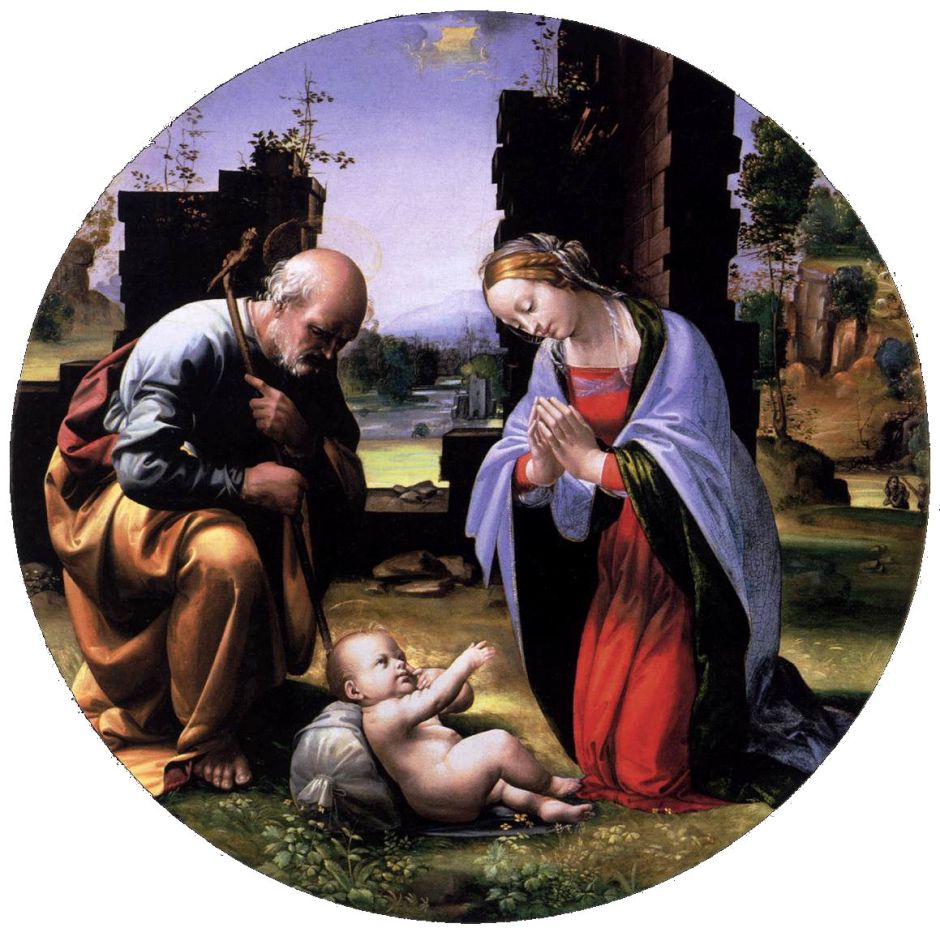
Fra Bartolomeo’s tondo of the Adoration of the Child was one of his last works before he took orders and stopped painting. Its reading depends on the interpretation of the spring flowers in the foreground: if these are symbolic of new life, then it could safely be a nativity scene; if they are literal indicators of the season, then this is intended to show an adoration well after Christ’s birth, and probably after the return from Egypt.
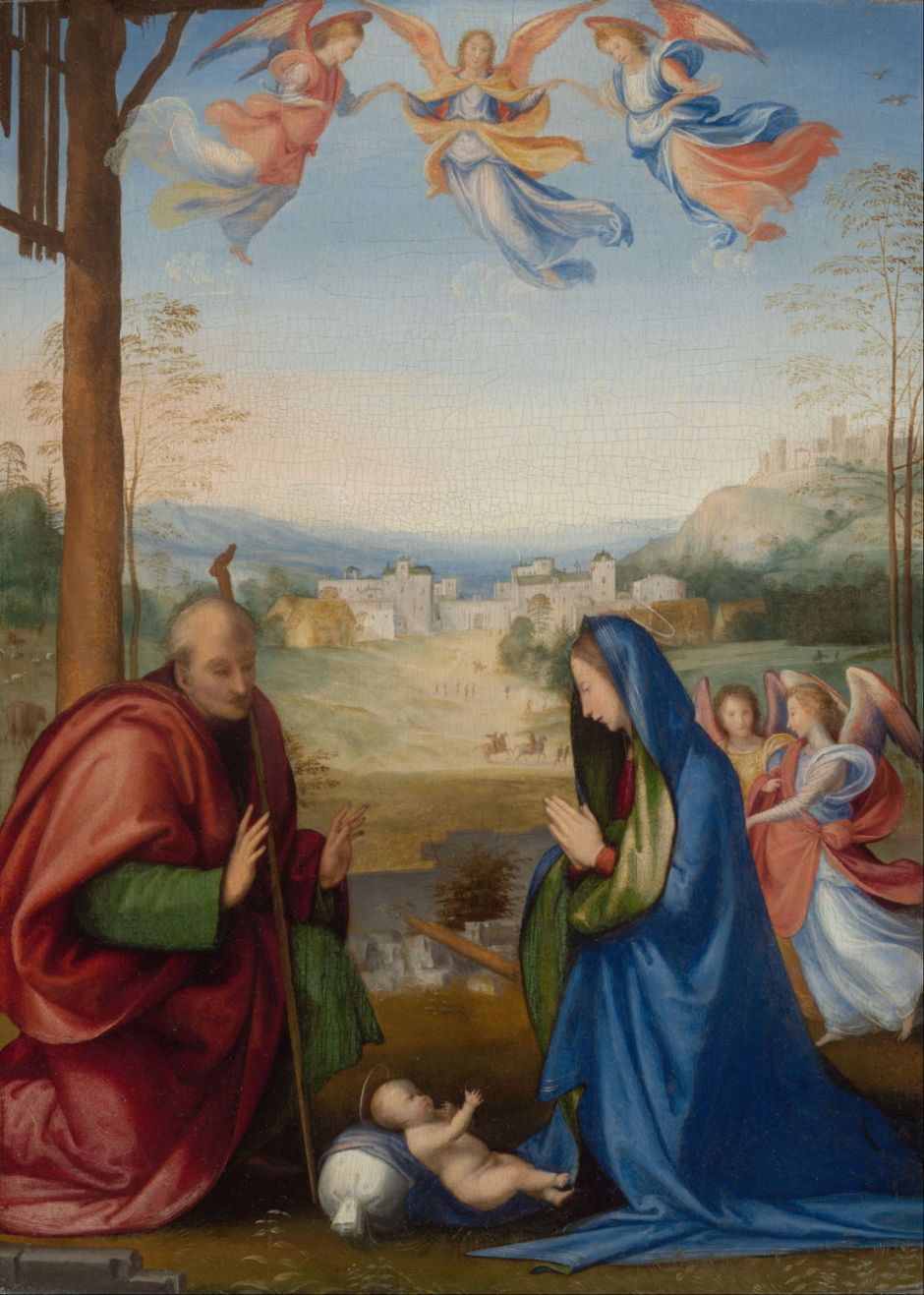
After he had returned to painting, this Nativity was one of Fra Bartolomeo’s earlier works. Its wonderful landscape background is based on a drawing which the artist appears to have made in front of the motif, rather than some idealised view in his mind.
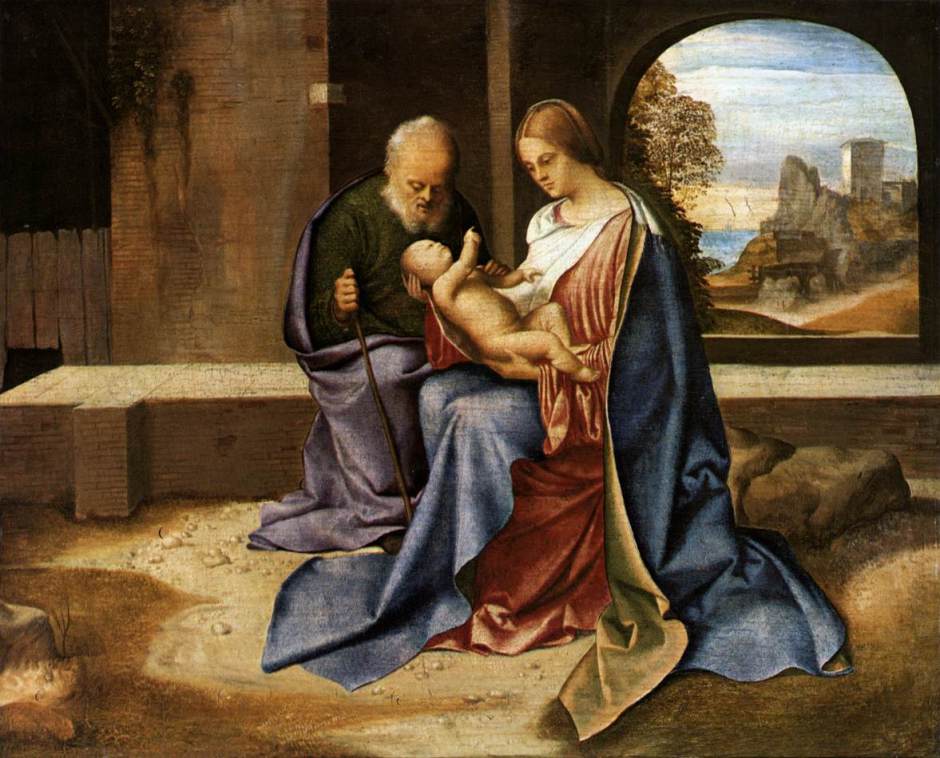
Three of the very few paintings by Giorgione believed to have survived (there has been a long dispute as to whether he painted them) are The Holy Family, above, the Adoration of the Kings, below, and the Adoration of the Shepherds, below that – known together as the Allendale Group, from around 1505-10.
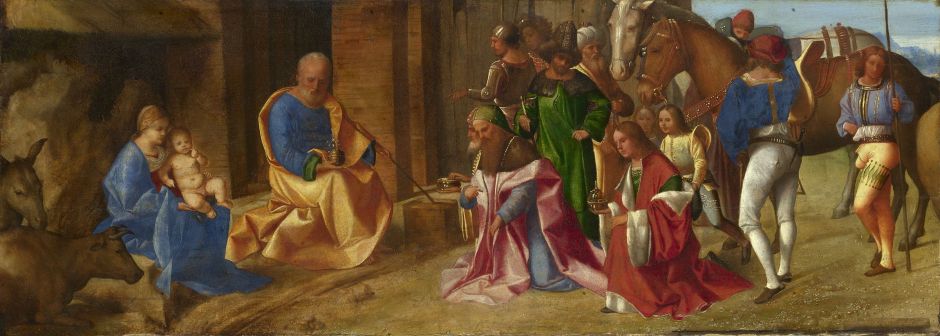
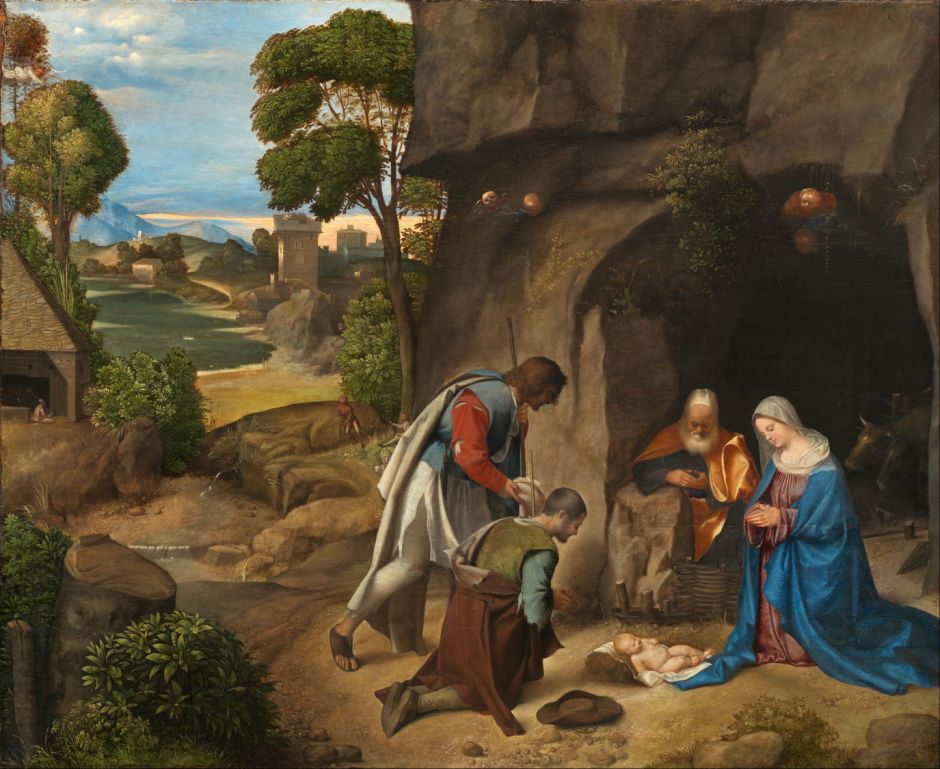
The Adoration of the Shepherds (‘Allendale Nativity’) (1505-10) is an altogether more sophisticated and innovative painting, showing two shepherds paying their respects to the newly-born Christ and his parents, with superb modelling of those figures. Behind is an Italianate landscape with fine details and strong aerial perspective in the distant hills.
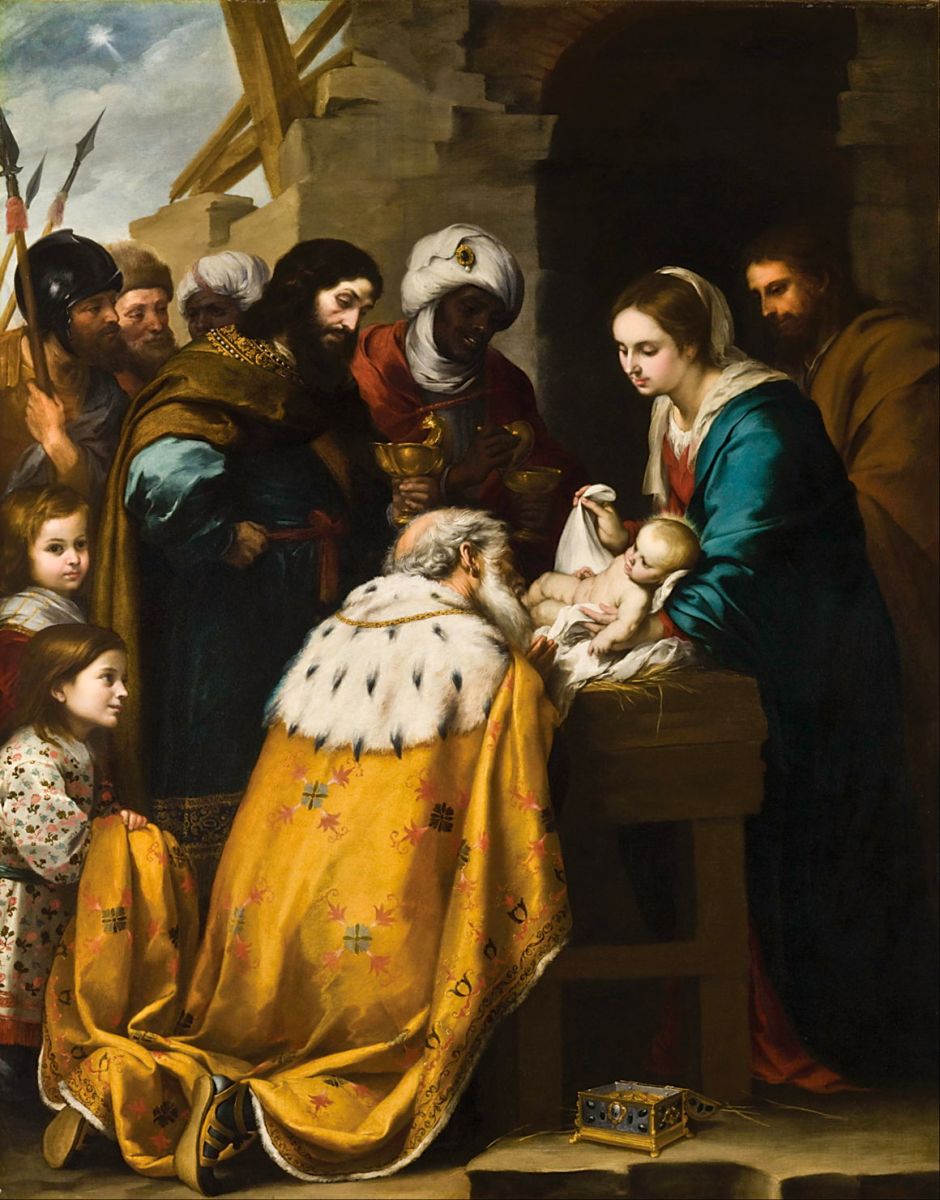
With the figures of Mary, Joseph, and even the infant Jesus, becoming increasingly naturalistic and realistic, the viewer could place the Nativity in their world, rather than in some remote and even abstract location. This encouraged identification of viewers with the figures, particularly for mothers with the Virgin Mary.
More radical composition helped strengthen this, in transforming nativities from large, impersonal scenes with a complete stable set in front of distant countryside, to the close-cropped figures of Murillo’s Adoration of the Magi (1655-60). The lighting focusses our attention on the infant, and the directed gazes of those around him. Murillo still provides some of the stock details, such as the star at the upper left, to link in with the story, and two children at the left edge are wonderfully natural.
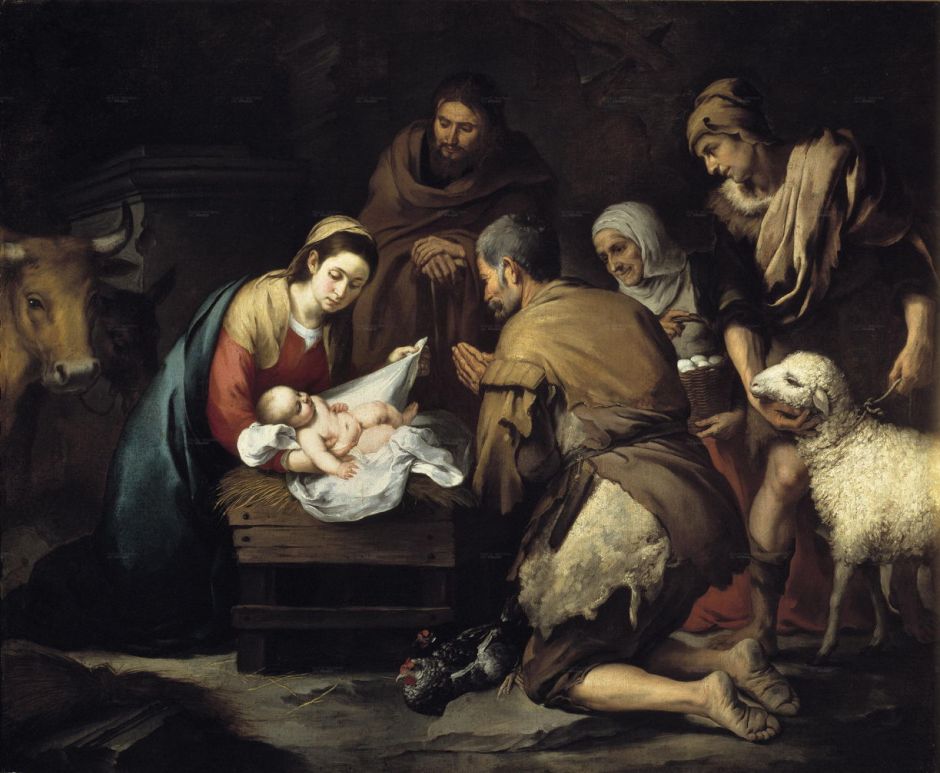
Murillo’s earlier Adoration of the Shepherds from about 1650 employs similar techniques, with delightful additional details including the old woman carrying a basketful of eggs, chickens in front of the kneeling shepherd, and that shepherd’s worn appearance. His composition brings the heads of the key figures together, where the strongest light is cast on the baby and his mother.
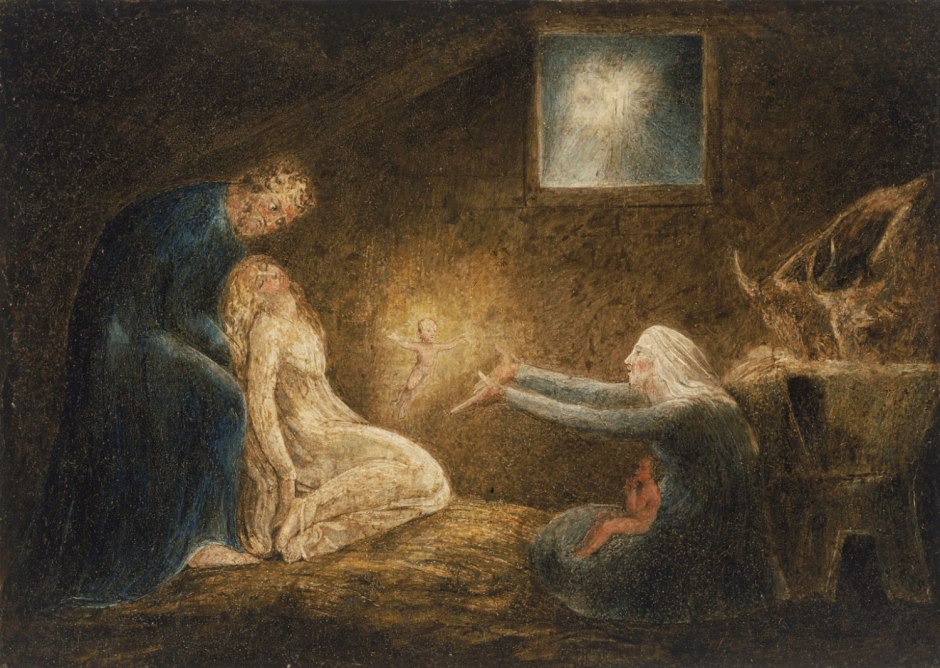
As you might expect from William Blake, his Nativity is unique and quite extraordinary. On the left, Joseph supports the Virgin Mary, who appears to have fainted. Jesus has somehow sprung from her womb, and hovers – arms outstretched as if ready for crucifixion – in mid-air. On the right, Mary’s cousin Elisabeth greets the infant, with her own son, John the Baptist, on her lap. Blake makes clear the difference in age between Elisabeth and Mary.
Although that is most unconventional, Blake still includes, at the right, the familiar ox and ass, and a cross or star burns bright through the window at the top.

Blake’s version of the Adoration of the Kings is far more conventional and has retained more of its original beauty, with the three wise men presenting their gifts to Jesus and his parents. At the left, outside, shepherds are tending to their flocks of sheep beneath a stylised star, and at the right are the ox and ass.
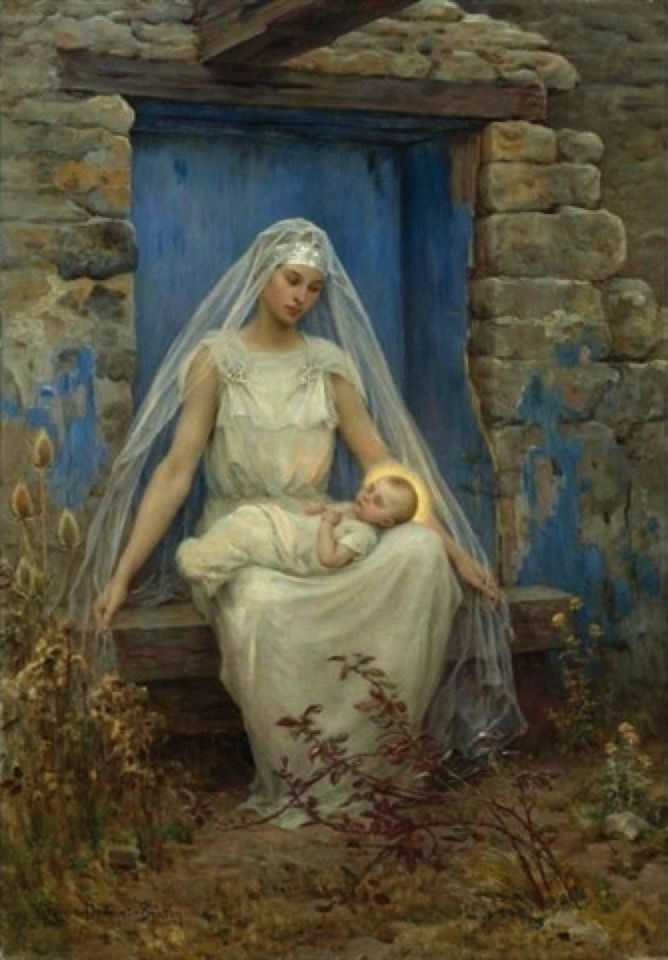
My favourite Nativity from the end of the nineteenth century is Virginie Demont-Breton’s almost forgotten Alma Mater. Although her style may appear quite conventional, her departures from convention have resulted in a painting which is fresh and very contemporary. The Virgin Mary, our ‘nourishing mother’ of the title, is dressed in white as a bride. The traditional blue has transferred from her clothing to the flaked paint of the ruins behind her.
She looks very young, and there is no sign of Joseph, just her obviously holy infant lying swaddled on her lap. Around her are the weeds of waste and derelict sites. Is she yet another homeless single mother?

Finally, Eleanor Fortescue-Brickdale’s watercolour of The Nativity shows a distinctly contemporary cowshed, singular only in the dress of the mother attending to her infant.
Happy Christmas!

